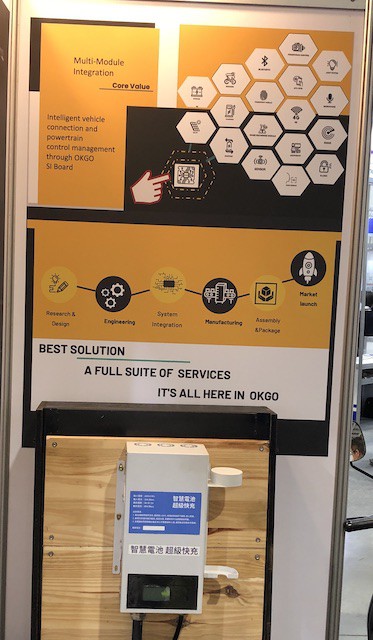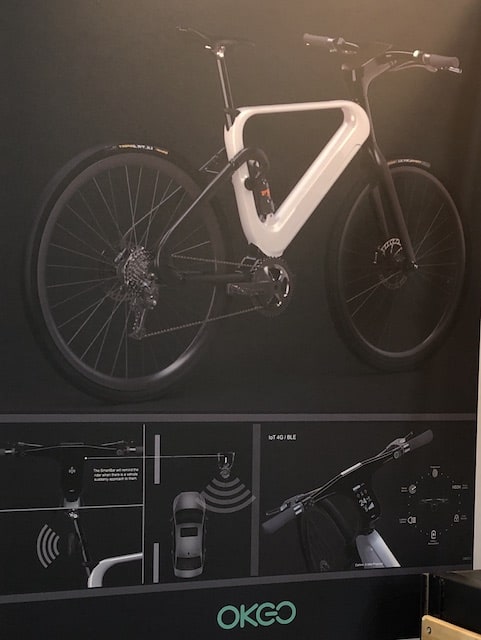E bike tech is the fastest evolving sector of the bicycle industry.
And one of the most far-reaching effects of the rapid pace of development on the bike industry is that e-bike technological innovation doesn’t involve just e-bikes—it involves a group of inter-related technological integrations that depend on companies outside the bicycle industry.
What we need to recognize is that a e-bikes are evolving into smart phones on two wheels which may well radically transform the industry into a subcategory of the hight-tech electronics industry.
If you’re a brand in the business of making e-bikes, your business model will have to change in some way, perhaps even totally if you wish to still be around perhaps in as little as five years, certainly ten.
CONTENTS
Will IoT Revolutionize the Bicycle Industry?
The Evolution of Bike Technology & Emergence of E Bike Tech
IaaS: IoT As a Service in the bike industry
Data Collection & Privacy Laws—Product Killers?
WILL IoT REVOLUTIONIZE THE BICYCLE INDUSTRY?
Yes, said mobility expert Dr. Mo-Hwa Yang of ExtraEnergy Consulting at the Bicycle IoT Techniques International Expert Symposium held in Taichung, September 2022.
A broad spectrum of bike companies attended this event, showing a growing awareness of the need to learn about IoT technology and get ideas from experts about how to take advantage of the rapid developments in relation to e-bikes.
Brian Yeh, president of the Acer subsidiary MPS Energy, began the day with a general IoT overview and then covered several examples of how IoT is being used by companies such as Bosch, Comodule and his own company, MPS, to create the bicycle industry of the future.
And, clearly, these companies are not bicycle companies.
Indeed, Brian discussed the current tech hierarchy dominated by Google (Android) and Apple’s IOS.
Then you’ve got the big non-bicycle players such as Bosch and Acer and only then the bicycle industry, where Taiwan is very much in the position of a follower.
True, Taiwan’s semiconductor industry is king in IT and Brian is not the first to point out what a powerful combination advanced semiconductors and e-bikes could be.
The reality, though, is that the gap between the chip makers on one hand, and bicycle brands incorporating this tech in products on the other is enormous—they move in different worlds.
IoT will change the bicycle industry
Dr. Mo-Hua Yang’s close examination of the business case for IoT as it relates to the micromobility movement was the most important talk of the day and the remainder of this section summarizes and discusses the points made in the talk.
Dr. Yang characterized the future as dominated by the integration of IoT and micro mobility systems and applications, or what he calls the “micro e-mobility revolution”.
The market for micro mobility IoT solutions will grow at a compound rate of 17%, from 5 billion in 2021 to 26 billion in 2031 which represents a massive opportunity for legacy bicycle companies looking to expand revenue streams beyond supplying e-bikes.
The Evolution of Bike Technology—the emergence of e-bike tech
What must be understood is that the bike industry at a technological tipping point that will radically separate bike design of the past 140 years (since the advent of Starley’s safety bike) from all future designs.
There are 4 phases in bike design evolution in which phase 1 is now rapidly giving way to phases 2, 3, and 4.
In Phase 1 the bike is a mechanical product, an integration of mechanical components. We have been in this phase since the appearance of Starley’s safety bike in the mid 1880s.
Phase 2 is characterized by the electrification of mechanical bikes—e-bikes are defined as “smart products” which are classified as belonging to an early stage of digitalization. Tech in this case is about basic monitoring and systems control.
These bikes are smart only in the sense that a the e-bike controller is smart and the handlebar-mounted computer is smart.
Phase 3 marks the start of digital integration via IoT “smart connected products” with Phase 4 marking the appearance of the Intelligent Product, made possible through integration with AIoT.
AI itself is at a tipping point as the mid 2020s approach with major advances in machine learning beginning to revolutionize the field.
Nevertheless, the main business models in the future will not necessarily be derived directly from making e-bike tech or related products available—business success will stem from the services within which those products are embedded, specifically:
- MasS – Mobility as a Service
- IaaS – IoT as a Service
- CaaS – Connectivity as a Service
IaaS
IoT as a Service is key in this vision of the bicycle industry’s future.
The bicycle industry now works by means of a product development cycle where a customer purchases a physical product—bike, component, device, or accessory—in a one-off payment.
The essence of an IoT product, though, is service—revenue is earned from regular payments over time.
The key to business success is to ensure the service is uninterrupted at an absolute minimum, with the aim of continually improving it over time by increasing the value proposition for the customer which increases the likelihood of a customer remaining a customer.
In terms of business strategy, then, the focus is on maximizing customer Lifetime Value (LTV).
There are 6 areas that can form the basis of revenue models individually, or in combination:
- Client Learning
- Strategic Consulting
- Solution Development & New Business Modeling
- Marketing Services
- Sales & Business Development Services
- Customer Experience Management
I’ll illustrate this through the example of OKGO, a brand established in 2019 which is representative of the new form in which bicycle component companies are beginning to appear.
OKGO’s fundamental stated expertise is “EV” charging although “IoT application and system integration” focused on—but not limited to—bicycles better describes it.

They offer a platform into which sensor, charging, and IoT modules can be connected and then managed.
A particular target is bike sharing or last-mile delivery fleet management, but bike shops could conceivably offer products that are offered through, or managed through, the platform.

An example of an IoT app that can be connected is the rear-facing radar where a cyclist is alerted as a vehicle approaches the rear of the bike.
OKGO’s overall business model covers all 6 of the revenue areas mentioned earlier, although it focuses within some specific areas more than others.
Generally speaking, companies that deliver products to their customer base through the conventional model don’t necessarily need to abandon that model.
Adding IoT service components on a hybrid basis is a sound strategy but it presupposes a monitoring and maintenance platform of the sort offered by OKGO.
Possibly the biggest business opportunity over the next decade and beyond lies in creating such platform-based ecosystems, ecosystems that evolve, adapt, and make possible new integrations as the enabling technology evolves.
Each of the 6 revenue models is possible for any company with unlimited possibilities for companies willing to experiement.
MaaS
Mobility as a Service makes it possible for users of bicycles—and other (electric) vehicles but lets stick with e-bikes for the example—to plan journeys, book bikes, and pay for the period of use through a centralized platform.
MaaS is a concept rather than a business model in itself since a wide variety of business models are possible.
Three elements define MaaS:
- the service has user needs as the focus
- ‘mobility’ is the key concept, not simply ‘transportation’
- integration of information, ticketing, and payment
The implication is that bicycles are not the product, but the means of providing a service, an experience. Bicycles are the means to providing the service.
And key to this is a focus on user experience—happy customers is the goal of an MaaS system.
CaaS
Any business offering Communications as a Service will be located outside of the bicycle industry strictly speaking, which shows up in the current trend of legacy electronics companies moving into the bicycle industry as electrification continues apace.
A company like gpstuner is an example of an outfit that began by offering GPS devices for bicycles in the early 2000s and which quickly evolved into a cloud-based service provider by 2016.
In summary the main point is that there will always be a need for businesses to sell atoms (physical products) in the future—but the real money will flow from new business models that rely on you marketing and selling your skills in managing bytes.
A key problem, however, is the rising awareness of data privacy as a key point of concern for individuals and a focus of legislative control by both national and state governments . . .
WILL DATA COLLECTION & PRIVACY LAWS KILL PRODUCTS?
The increasingly widespread enactment of privacy laws governing what data can be collected, and under what circumstances, has the potential to limit the usefulness and thus consumer uptake of IoS devices.
And modern e-bikes are fast becoming smart phones on two wheels.
Here’s an overview of the growing body of privacy legislation around the world as of May 2021.
The most well-known example is the EU’s GDPR.
The general implication of such legislation is an increasing likelihood that data collected locally will have to stay local.
The Schrems II ruling is perhaps the most recent addition with the greatest implication for data sharing across jurisdictions. (Read up on the twists, turns and implications here.)
Simplifying the argument, not storing and processing user data in a center located within the same jurisdiction in which the use of a connected product occurs will stand in breach of the relevant privacy statutes.
Restricting data sharing in this way is a huge problem since as-a-Service products are cloud-based by definition.
Restricting data to local servers is potentially a product killer since data centers are centrally placed. Google has data centers in only four EU countries, for example—with no infrastructure for storing data in any of the others, why collect data in the first place if it will sit unused on individual devices outside of big data?
The problem for companies the patchwork of laws that exist right now along with the constant additions and revisions which make achieving 100% compliance extremely difficult—if not impossible—for anyone apart from companies that can employ lawyers to ensure compliance to-the-letter of the law.
EPILOGUE: THE E BIKE TECH CONUNDRUM
On one hand e-bikes are technically less complicated than their mechanical forebears.
For example, the original Shimano 105 front derailleur had the two limit screws and cable pinch bolt.
Adjust the screws.
Pull the cable through.
Clamp.
Simple.
105 now involves a threading the cable through, then back around on itself, AND includes a cable tensioner—the tensioner’s stop needs setting up prior to the install so you can align the lines etched into the rear of the unit . . . and so it goes.
On the other hand, a mid drive e-bike’s motor bolts in—and you’re done. Component replacement is modular and you’ve even done away with press fit BB complications to boot.
However Joe Lindsey of the Outside magazine argues that e bike tech is making simple DIY work on bikes impossible.
Technical advances make bikes easier to ride, exponentially raising the pleasure of riding principle—but these machines are much harder for the home mechanic to deal with.
The technical complications of modern components are not all due to e-bike innovations, as the 105 derailleur example proves.
But with diagnostics functioning via IoT integrations, the best place for maintenance and repair is the nearest bike technician. And indeed, many e-bike systems are integrated with apps that continually diagnose in real time.
Basic maintenance now entails keeping bolts at correct torque tolerance or fitting and adjusting the odd accessory now and again.
